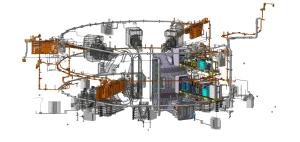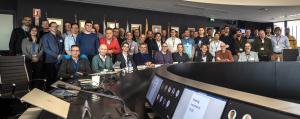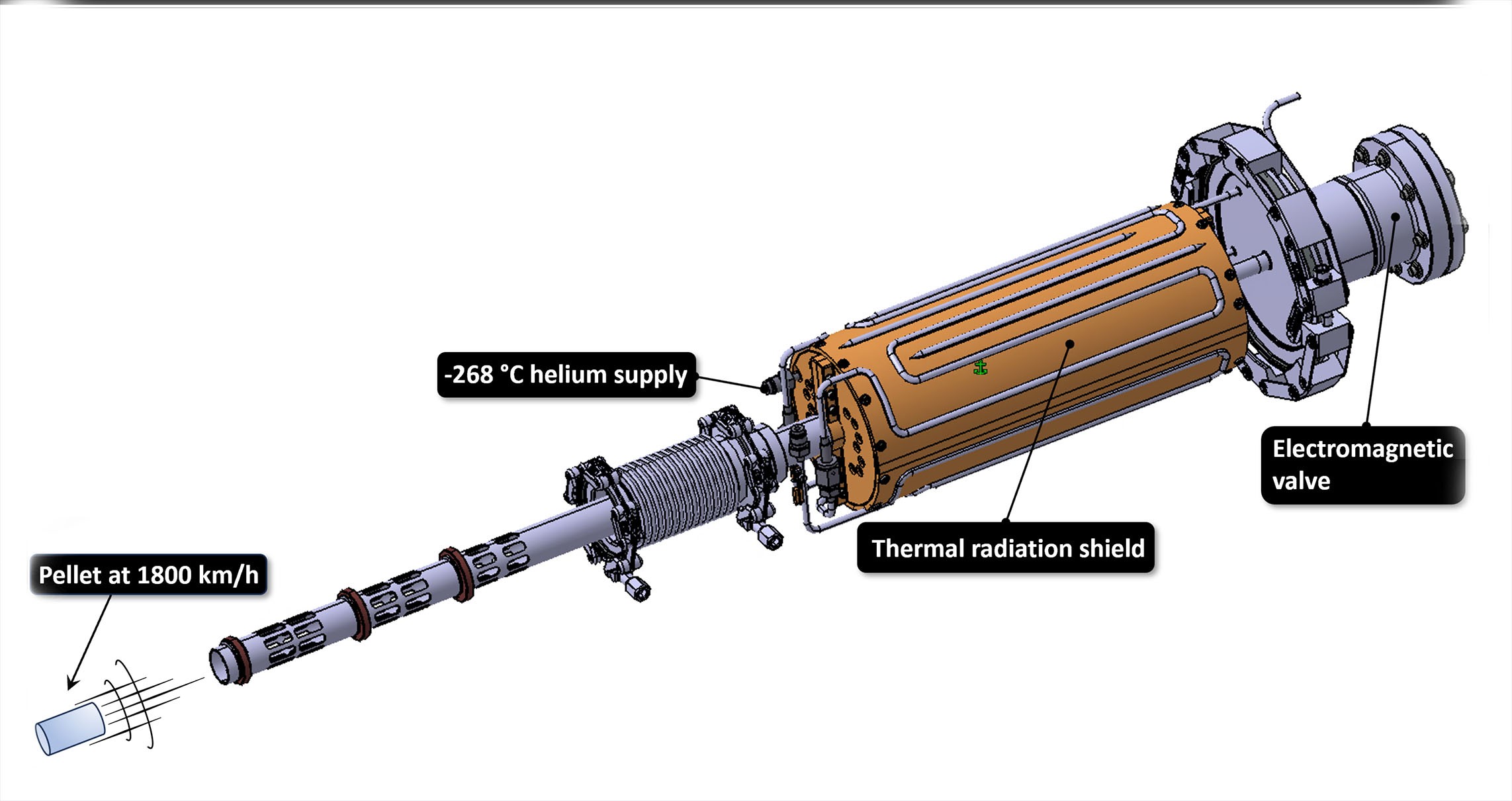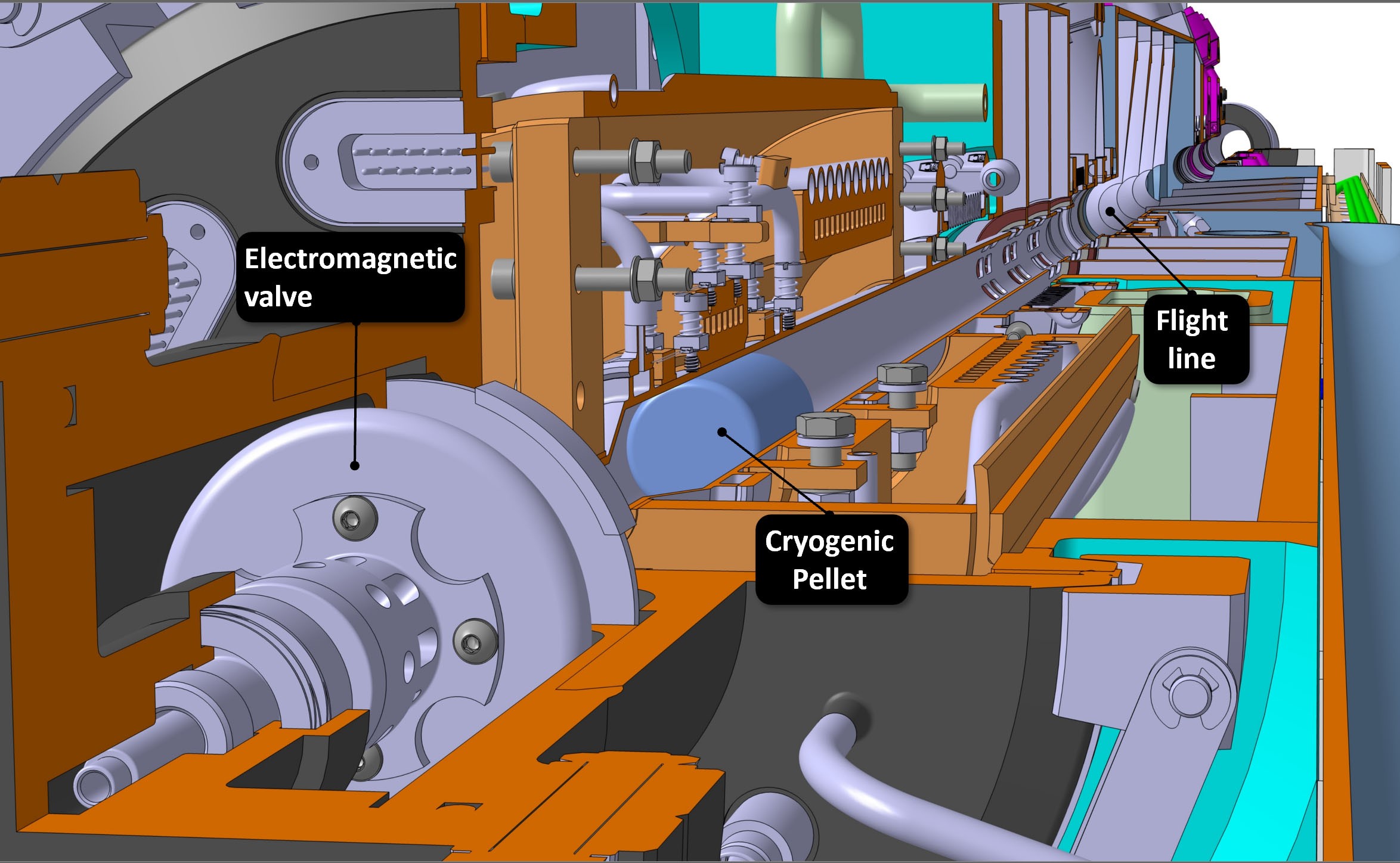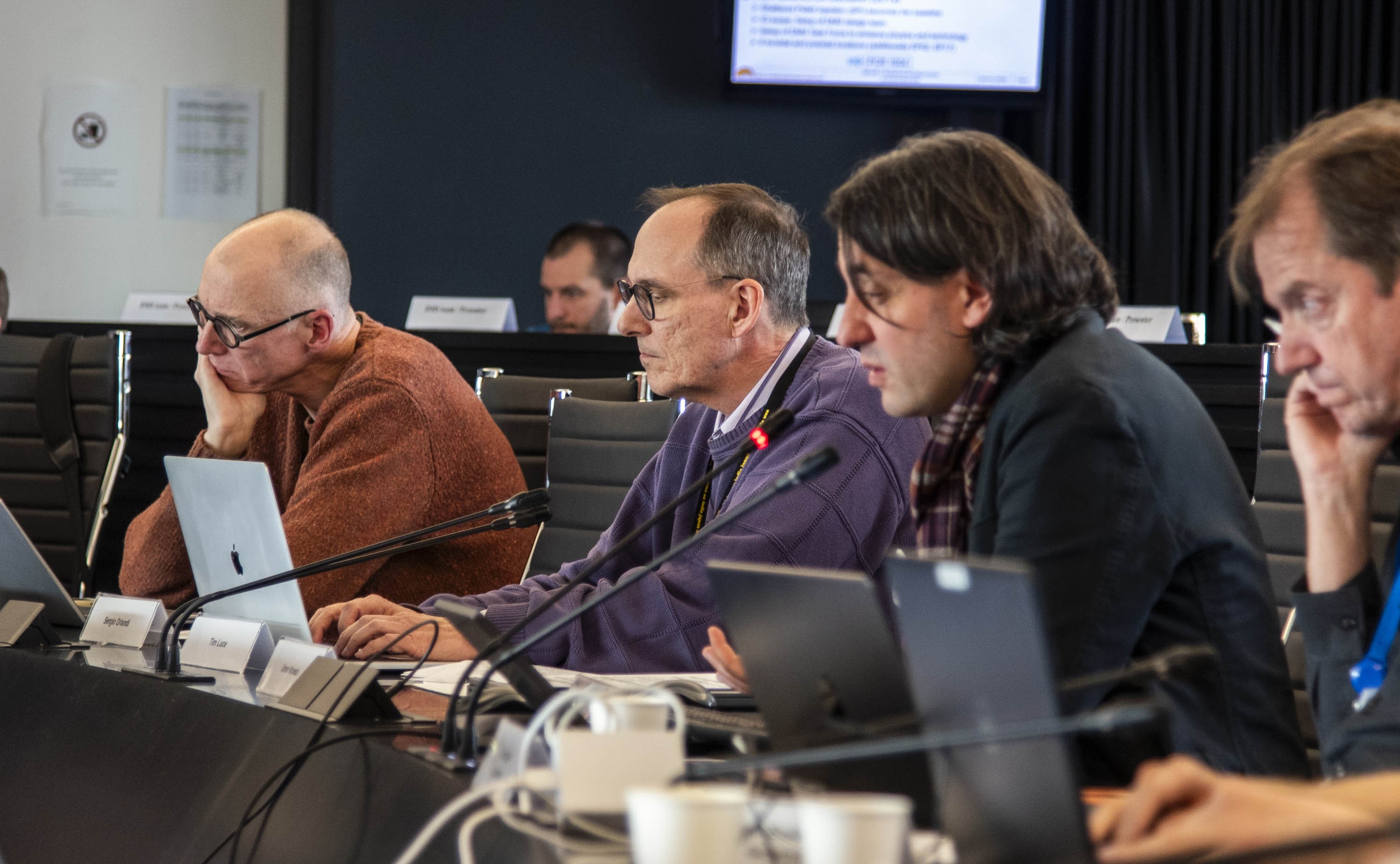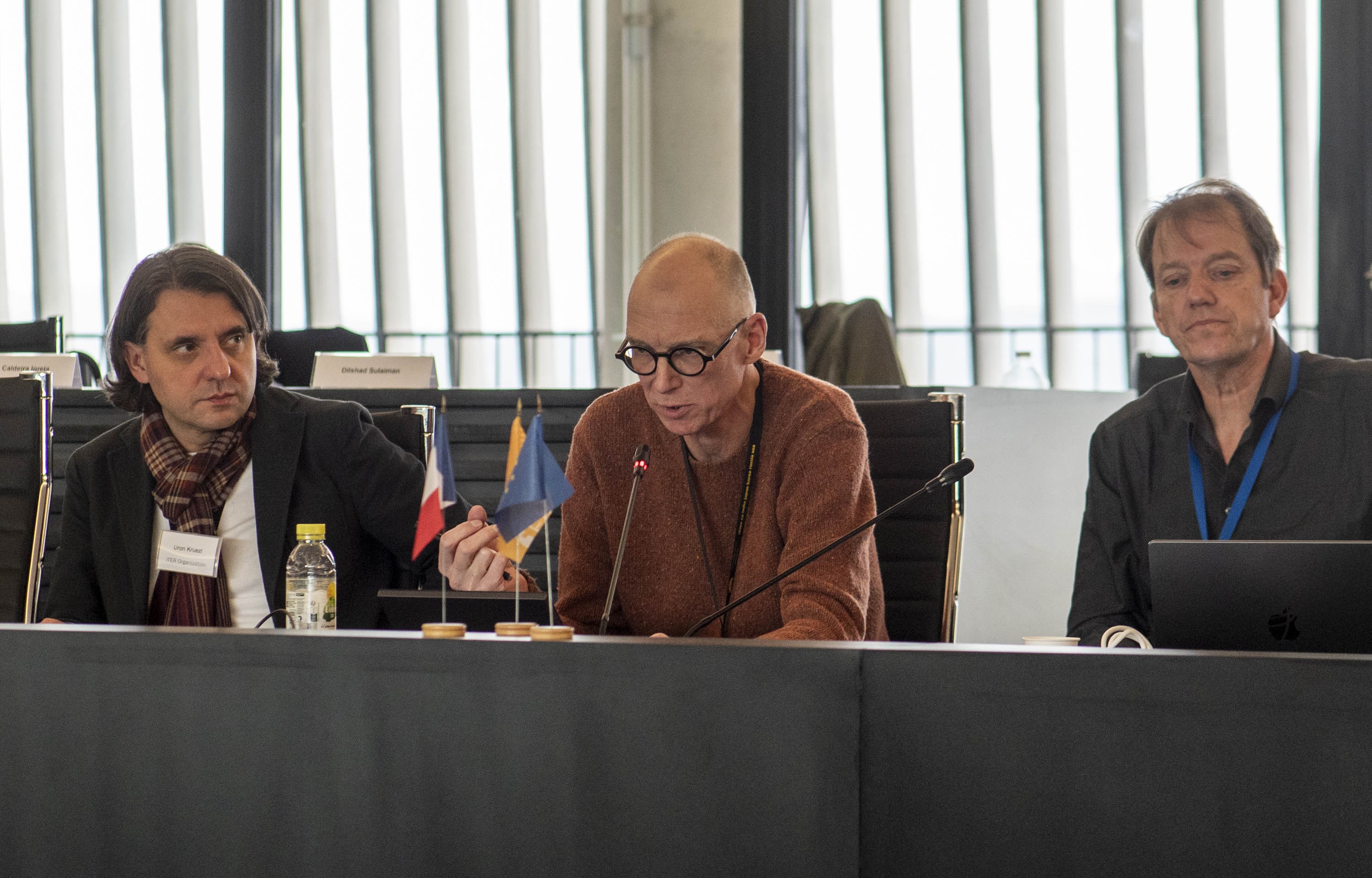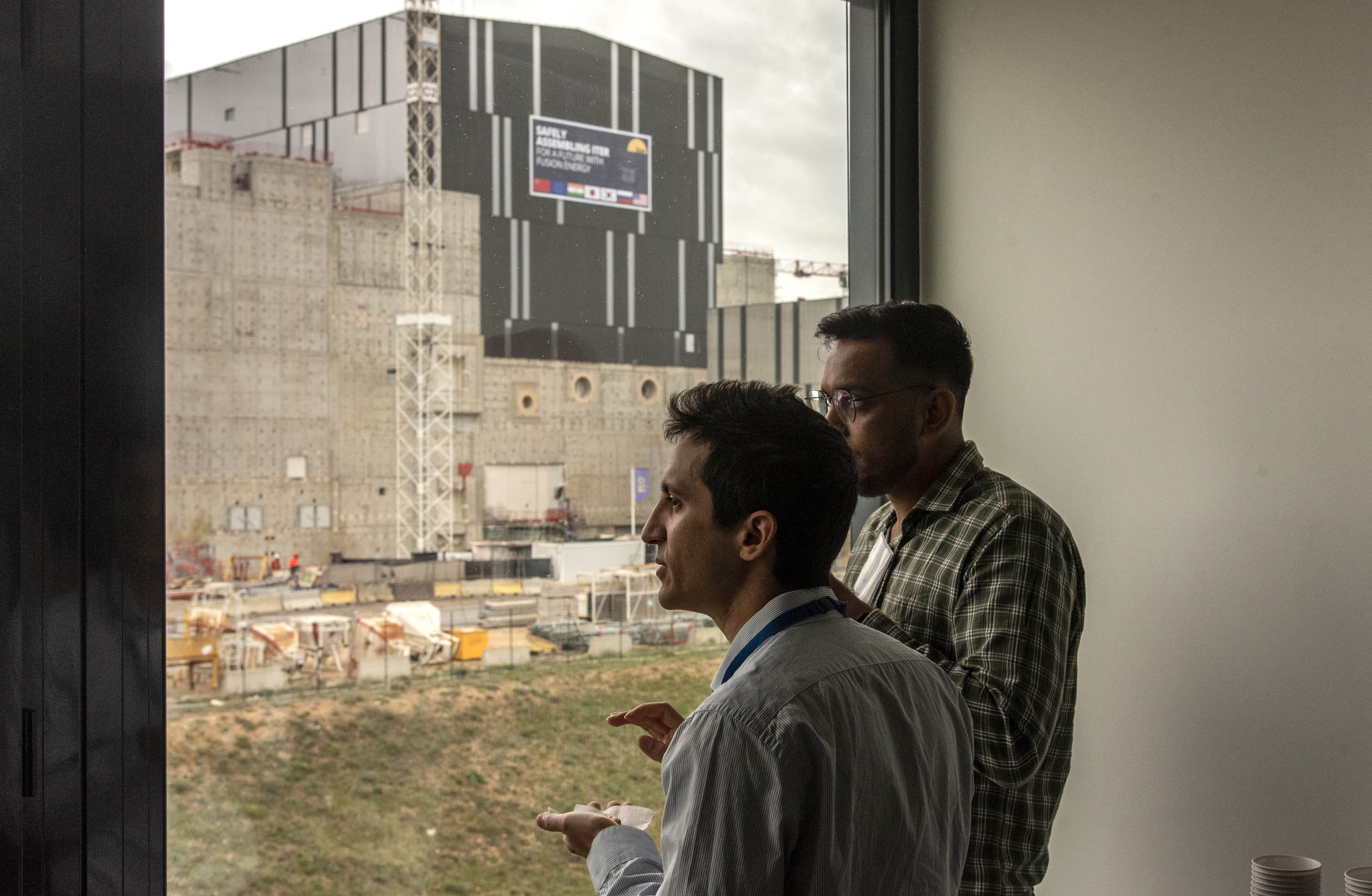Final design review is a major step forward
The generations of physicists, engineers, technicians and other specialists who have worked in nuclear fusion share a common goal, dedication and responsibility: making nuclear fusion possible for the next generations. While grappling with unsolved issues can make a career in fusion feel a little bit like Ulysses' long and difficult journey in Homer's Odyssey, the large international team working on the disruption mitigation system for ITER has now completed a major milestone in its journey.
During the final design review held in late March at ITER Headquarters under the chairmanship of George Sips (General Atomics, San Diego), no showstoppers were identified and the disruption mitigation system (DMS) for ITER has been greenlit to continue its path towards manufacturing, installation and operation.
As part of the review, the teams working together on the design and physics of the disruption mitigation system and diagnostics port integration, along with many international collaborators, introduced to the review panel a subset of the system's complete technical documentation, amounting to over 30,000 pages of design descriptions, diagrams, engineering analyses, calculation reports, and prototype test reports. Over four days the full detailed design of the disruption mitigation system of ITER, comprising more than 100,000 components, was presented in person in the ITER Council Room and via video conference in 40 concise presentations by 33 presenters. More than 100 internal and external technical experts were invited to review the detailed design of this crucial ITER machine protection system.
The disruption mitigation system will protect machine components against excessive heat loads and electromagnetic forces that result from plasma disruptions, which cause a sudden loss of stored thermal and magnetic energy. The disruption mitigation system will use shattered pellet injection to deliver massive amounts of protium and neon in the form of small ice fragments into the plasma to convert the energy into radiation.
In 2017, a workshop with worldwide plasma disruption experts was held in the exact same room as the final design review. The verdict was clear: due to the complex nature of disruptions, significant gaps existed in the physics understanding which had to be addressed. One year later, in 2018, the ITER Science and Technology Advisory Committee concluded that plasma disruptions posed an existential threat to the ITER mission and that their mitigation was of the highest priority. The ITER Council instructed the ITER Organization to set up project teams to develop the required physics basis and to design an efficient disruption mitigation system for the project.
To understand why the worldwide experts are worried about the fast accidental losses of plasma current and stored energy that occur during disruptions, one only has to keep in mind that the stored magnetic energy in ITER can reach about 1 GJ, and it would be released within a fraction of a second. This is equivalent to the kinetic energy of a 100-tonne railroad locomotive travelling at about 500 km/h as it impacts a massive wall.
While most parts of the ITER machine like the vacuum vessel are designed to withstand any possible disruption event, it is still important to protect the components inside the machine from excessive electromagnetic loads. Although armoured with tungsten, which has the highest melting point of all known elements (3422 °C), the components facing the fusion plasma can be subject to melting from heat loads and the impact of so-called runaway electrons. If such damage were to occur, plasma operation would have to be halted for long periods of repair, moving ITER's goal of demonstrating the feasibility of fusion further into the future.
To cope with these potentially damaging effects, an international scientific and engineering team has developed a sophisticated and robust mitigation method that can protect the ITER machine by reacting within milliseconds, similar to the way an airbag is deployed in a car.
The ITER disruption mitigation system is based on shattered pellet injection. Wine-cork-sized hydrogen and neon pellets formed in what is called a cold cell assembly (see gallery below)—at the cryogenic temperature of -268 °C and in an ultra-high vacuum environment—are released by a specially developed electromagnetic valve opening within 1-2 milliseconds of the start of a disruption. The pellets are then accelerated to supersonic speeds (> 1800 km/h) and fly with an exceptionally accurate trajectory (with just 5 mm clearance between the pellet and the wall on either side) through a narrow flight channel over a distance of six metres. At the end of its path each pellet deliberately collides with an inclined surface and is shattered into thousands of small broken pellet fragments, which will enter the plasma and mitigate the disruption. By the time these pellet fragments arrived in the plasma, about 12 milliseconds will have passed since the system was activated which is about ten times shorter than a blink of an eye.
For the last six years a large international effort—involving science and engineering teams under DMS Task Force Leader Michael Lehnen and Technology Group Leader Stefan Jachmich; the ITER disruption mitigation design team; disruption mitigation experiments and accompanying simulation efforts (read more here and here); and countless technical meetings (see reports here and here)—has built not only a solid knowledge basis in terms of physics and technology, but has led to the development of technologically advanced design solutions that work reliably in cramped space and in one of the most extreme environments on the planet.
More hurdles remain ahead before the disruption mitigation system can demonstrate its capability to protect the ITER machine against the detrimental consequences of disruptions and ensure that ITER will reach its final goal. But judging from the challenges already overcome by the ITER and international teams we are confident that we will get there ... one step at a time.



